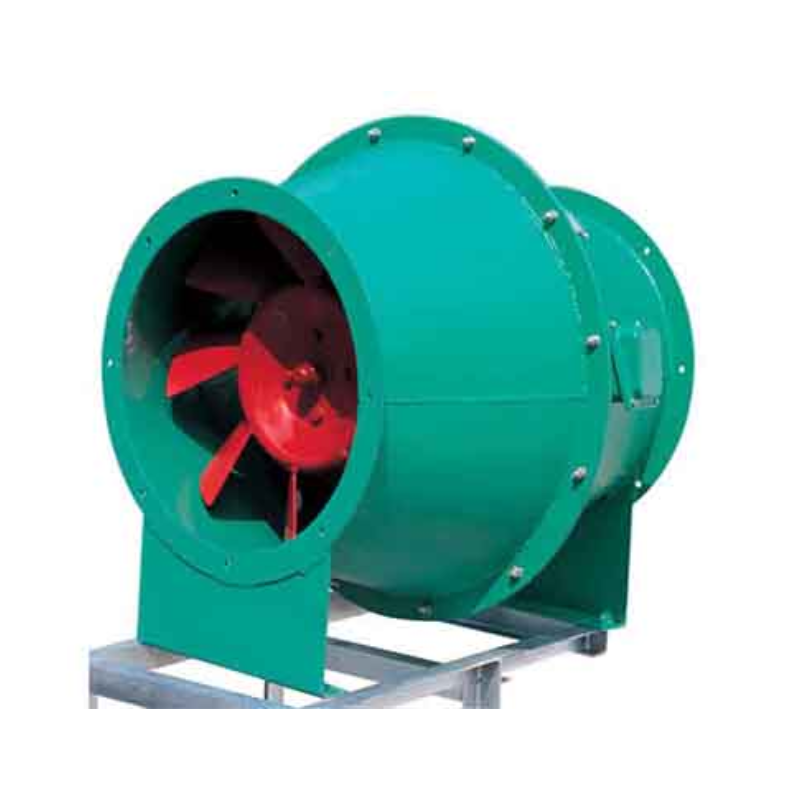Axial flow fire smoke exhaust fan
Axial flow fire smoke exhaust fans can be used for ventilation and air exchange in general factories, warehouses, offices, residences and other places. They can also be used in cold air machines (air coolers), evaporators, condensers, spray coolers, etc. There are also mine axial flow fans. Anti-corrosion and explosion-proof axial flow fans are made of anti-corrosion materials and explosion-proof measures
Axial flow fire smoke exhaust fans can be used for ventilation in general factories, warehouses, offices, and residences. They can also be used in air coolers (air coolers), evaporators, condensers, and spray droppers. Axial flow fans are also available for mining applications. Anti-corrosion and explosion-proof axial flow fans utilize anti-corrosion materials and explosion-proof measures, and are equipped with explosion-proof motors. They can be used to transport explosive, volatile, and corrosive gases.
Axial flow fans must transport gases free of significant dust, stickiness, and fibrous matter. The temperature of directly connected motor models must not exceed 40°C, while that of belt-driven models must not exceed 60°C. Dust levels in the transported gases must not exceed 150mg/m³. An axial flow fan primarily consists of an impeller, housing, and motor. The bracket is connected to the housing and duct using section steel. The impeller and housing of anti-corrosion axial flow fans are made of fiberglass, while other types are generally constructed of steel.
Working Principle
As the impeller rotates, air enters the impeller axially from the inlet. The impeller blades push against the air, increasing its energy, and the air then flows into the guide vanes. The guide vanes deflect the airflow into an axial flow pattern, directing the air into the diffuser, where the kinetic energy is further converted into pressure energy, which is then introduced into the working pipes.
The blades of an axial flow fan operate in a manner similar to that of an aircraft wing. However, whereas the latter applies lift upward to the wing and supports the weight of the aircraft, the blades of an axial flow fan are fixed in position and move the air.
The cross-section of an axial flow fan is generally an airfoil. The blades can be fixed or rotate about their longitudinal axis. The angle of the blades to the airflow, or the pitch of the blades, can be fixed or adjustable. Changing the blade angle or pitch is one of the main advantages of axial flow fans. A smaller blade pitch angle produces lower flow, while increasing the pitch produces higher flow.
Axial flow fans can vary the blade pitch during operation (much like a helicopter rotor), thereby varying the flow rate accordingly. This is called a variable-vane (VP) axial-flow fan.
Usage
Axial-flow fans, also known as local ventilation fans, are commonly used in industrial and mining enterprises. However, unlike conventional fans, their motor and blades are housed in a single cylinder, resulting in a cylindrical appearance. They are used for local ventilation, are easy to install, offer effective ventilation, and are safe. They can be connected to a duct to deliver air to specific areas.

